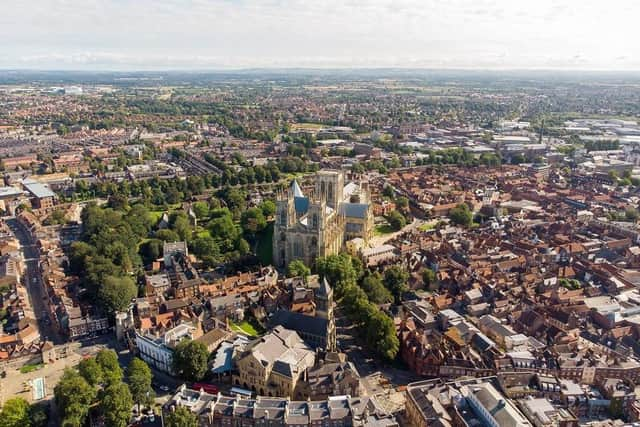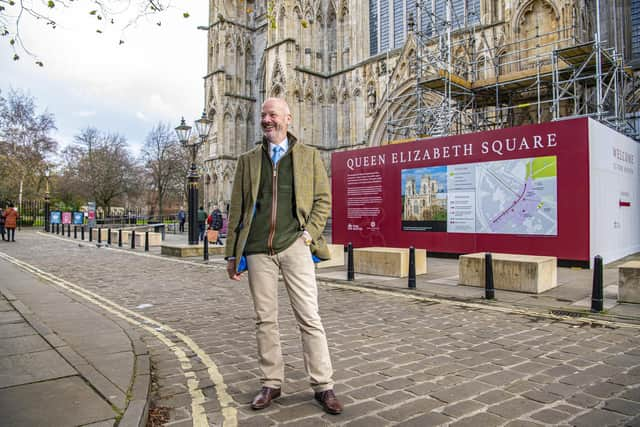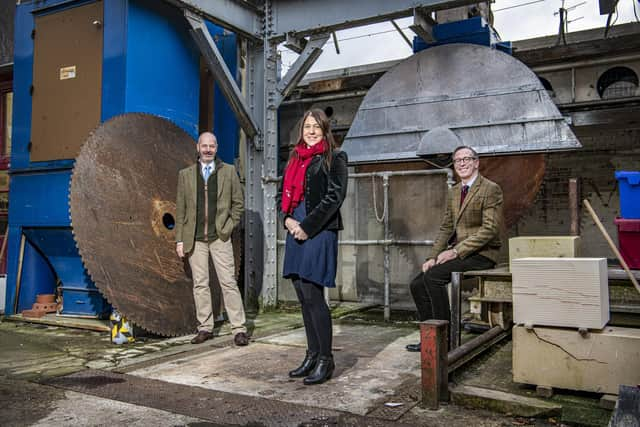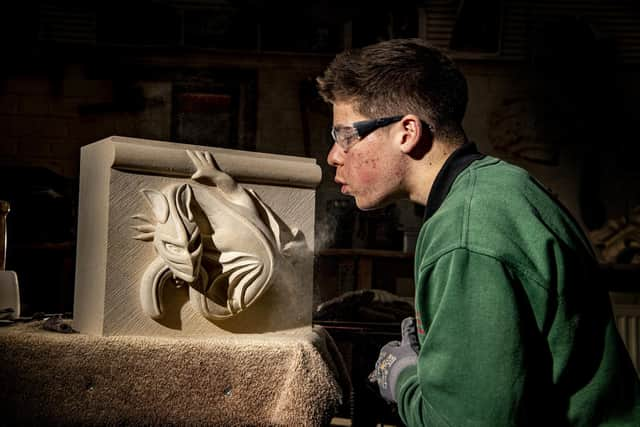York Minster restoration: 'Sheer volume' of rainfall over last five years led to damage of historic landmark
Ever since work began in 1220 on constructing the largest Gothic cathedral in northern Europe, York Minster has dominated the city’s skyline.
Its glorious architecture took 250 years to complete, and is a marvel that is witnessed by the 700,000 visitors who pass through the cathedral’s doors every year. But with the intricate stonework and the largest collection of medieval stained glass in the UK comes a very real risk that the essence of the cathedral will be lost for future generations.
Advertisement
Hide AdAdvertisement
Hide AdThe global emergency to tackle climate change is being felt keenly among the senior clergy and officials at the Minster, so much so that they have embarked on the biggest overhaul of the surrounding 15-acre precinct for centuries.


The ambitious project is aimed at marrying the ancient crafts of stone masonry and stained glass restoration that are so important to conserving the Minster with the need to introduce state-of-the-art technology to curb the advance of global warming.
The impact of more extreme weather conditions is already being felt on the Minster’s fabric, according to Alex McCallion, the cathedral’s Director of Works and Precinct and the programme lead for the neighbourhood plan.
He said: “Despite its size, York Minster is extremely fragile. It has been amazing to see the effects that the weather has had in a relatively short space of time.


Advertisement
Hide AdAdvertisement
Hide Ad“If you look back just five years, you can see that stonework has deteriorated significantly as we have seen extreme weather conditions such as storms and torrential rain becoming increasingly common.
“Before we were seeing the acidity in the rain cause the main problems with the Minster’s stonework, but now it is simply the sheer volume of the rainfall.”
The neighbourhood plan drawn up for the precinct is the first of its kind and sets out a vision for the next 15 years.
The precinct includes more than 60 listed buildings and a National Trust property, Treasurer’s House, as well as retail units, housing and green spaces including Dean’s Park.


Advertisement
Hide AdAdvertisement
Hide AdSt Michael le Belfrey Church, which sits to the south of the Minster and was where York-born Guy Fawkes was baptised on April 16, 1570, also falls within the boundaries of the precinct.
The plan has already attracted international interest after Mr McCallion travelled to Pisa in Italy in October to attend a summit on sustainability organised by the Association of European Cathedrals, with representatives from Milan, Vienna and Malta keen to learn from the work in York.
At its heart is a centre of excellence for heritage skills that is set to be established in a campus-style operation for not only stonemasons and glaziers, but also scaffolders, gardeners, joiners, electricians and plumbers as well as apprentices.
The Minster is one of only 10 of 42 Anglican cathedrals in the UK that have retained a dedicated body of craftspeople, and they have banded together to form the Cathedral Workshops Fellowship.


Advertisement
Hide AdAdvertisement
Hide AdBut current facilities for the Minster’s craftspeople to live and work in the precinct are limited, and it is hoped this will be remedied by the new facilities, including dedicated accommodation for apprentices.
The proposed development has been themed on the environment, and is set to be built to the rear of Minster Court with an undulating grass roof over a wooden structure, providing views across to the cathedral. It is also set to use the latest green technologies such as air source heat pump heating and a new lapidarium garden to increase biodiversity for wildlife.
Photovoltaic panels to generate solar energy to help power the centre of excellence are seen as a key element to helping ensure the development is carbon neutral.
Elsewhere, a technology and works hub is set to be created on the site of the present stoneyard, which will include a new drawing office with up-to-date IT and digital technology.
Advertisement
Hide AdAdvertisement
Hide AdThe Heritage Quad is due to be a new structure, which will replace the mason’s workshop located in the Stoneyard, and will be designed to sit sympathetically alongside the city walls and the Minster’s gardens.
Former garages at the rear of the Deanery will be renovated to provide new facilities for the Minster’s scaffolders and gardeners. The development will include accommodation for the Minster’s first and second year apprentices and for exchange visitors and trainees.
Financing the project is, however, a major challenge, with the cost expected to top £5m while revenues have fallen dramatically due to the impact of Covid-19 on visitor numbers.
The cathedral saw its revenues slashed from £6m in 2019 to less than £1m last year, with the Minster School being one of the highest profile casualties. The Chapter of York announced in June last year that the education institution was to close.
Advertisement
Hide AdAdvertisement
Hide AdEarlier this month, York Council approved a planning application for the school’s building to be transformed into a refectory restaurant, to be run by an award-winning chef, Bex Toppin, and her partner, Will Pearce, of Robinsons Cafe on the city’s Bishopthorpe Road. The planning permission paves the way for the first renewable energy source in the precinct with state-of-the-art solar tiles on the refectory’s roof.
A planning application for the centre of excellence is due to be submitted to York Council in the New Year. If approved and listed building consent is given, work on site is due to begin in 2022 with the new facilities operational by the following year.
The financing of the centre of excellence is being provided by the York Minster Fund, which was established in 1967 by the Earl of Scarbrough to save the 197ft Central Tower after surveys revealed the 25,000 tonne structure was gradually sinking under its immense weight.
The fund’s chairman, Richard Shaw, admitted the pandemic had cast a shadow over finances, but added: “We have been here for the Minster since the fund was created, and we will be here for it in the future. We have faced some tough times recently, but we are committed to making sure that the Minster is here for generations to come to enjoy.”